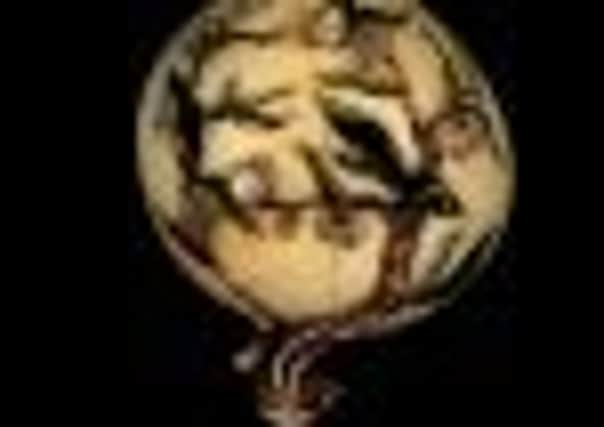Global influence founded on technologies of centuries ago


CHINA has the largest population and fastest growing economy of any on the planet. But there is nothing new about the enormous global influence. Many of the technologies and ideas we take for granted began life as Chinese exports, proving how advanced the country was many centuries ago.
Items as disparate as a 3,000-year-old fang ding or food container placed in tombs for the dead to use on their way to the spirit world, an ivory cricket tickler and Ming Dynasty glazed earthenware models of food are among more than 100 objects loaned by the British Museum for this show. They tell the story of thousands of years of innovation, set out in themed groups such as food and drink, festivals and beliefs and play and performance.
Advertisement
Hide AdAdvertisement
Hide AdHighlights include ceramics depicting Chinese warrior gods and immortals, an ornate 17th century porcelain model theatre and a bronze mirror from about 1,000AD linked to the Chinese Moon Festival. Also featured are traditional games and musical instruments dating from the 1600s to the1900s.
Alongside the precious collection loaned by the British Museum are examples of Sheffield Museums’ own Chinese Grice Ivories and other selected items from the city’s decorative art and world cultures collections. The ivories were accumulated and eventually donated to Sheffield by Dr John William Hawskley Grice, a medic working in Tianjin, a city in northwest China early in the last century. He was most interested in collecting ivory and bamboo carvings and jades, popular in China but not well-known in the West.
He assembled about 150 objects, mostly from the 1700s and 1800s, largely made to be ornamental and feed the growing market for export to European collectors. While on leave in the UK in 1937, Dr Grice sold the collection to Sheffield benefactor Dr JG Graves, and they are now only one of two collections of Chinese ivories in the UK, the only one in a public museum.
“We’ve tried to make this exhibition interactive and family-friendly,” says curator Theresa Whittaker. “For instance, we have worked with the Confucius Institute to provide recordings of what the various stringed and wind instruments would sound like, for instance, and we’re offering activities around the zodiac hand puppets.
Advertisement
Hide AdAdvertisement
Hide Ad“Visitors can also see beautiful Pathe Film Archive film of different Chinese feast day celebrations, and we have a wonderful collection of photographs of selected landscapes of modern China. The whole package certainly makes me want to visit China.”
So... back to the enigmatic cricket tickler. They were quite a common item in court circles, says Sheauran Tan, project curator, who went on a research trip to China prior to this show. “Concubines liked to hear the sound of crickets at night, so they kept them as pets in little pots. The tickler was used to poke the cricket slightly and encourage it to ‘talk’.”
To April 9, 2012.
Museum stages new year and lantern festival events
Events related to the China: Journey to the East exhibition, include:
Chinese New Year weekend (January 21-22) at Weston Park Museum – Chinese food and drink activities, kite making, dance, have a go at Mandarin, Tai Chi and puppet workshops.
Advertisement
Hide AdAdvertisement
Hide AdLunchtime talk on Sheffield’s Chinese Collection, February 2: Curator Sheauran Tan will discuss the exhibition, the city’s own collection of Chinese objects and her recent research trip to China.
Chinese Lantern Festival, February 4, Weston Park. Info: www.museums-sheffield.org.uk or 0114 278 2600